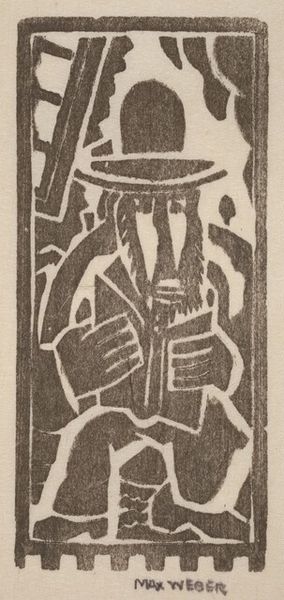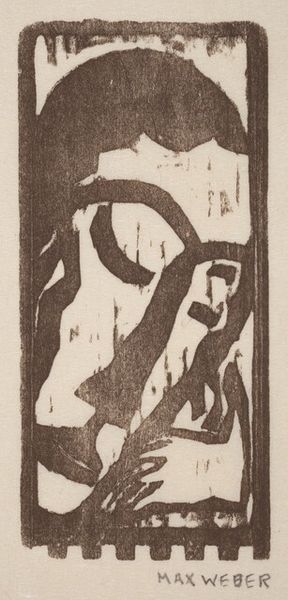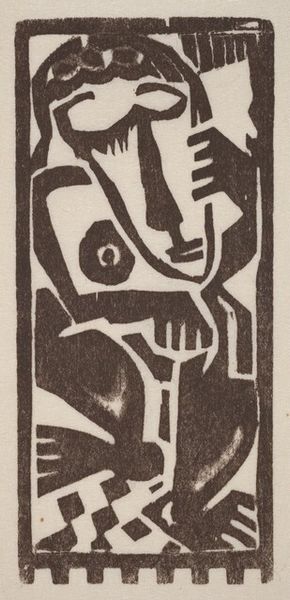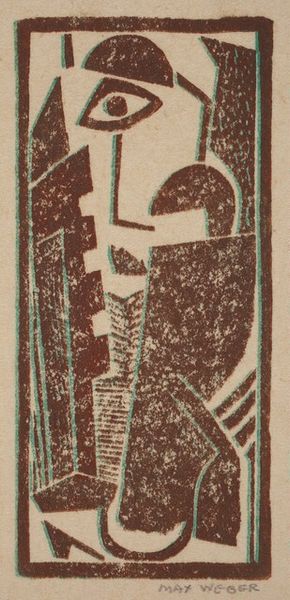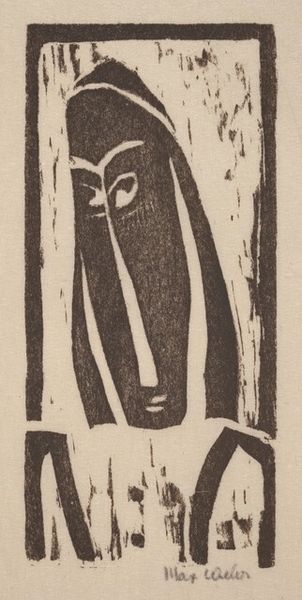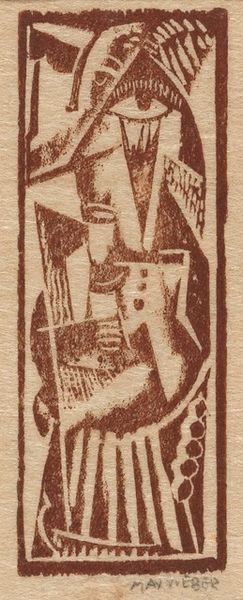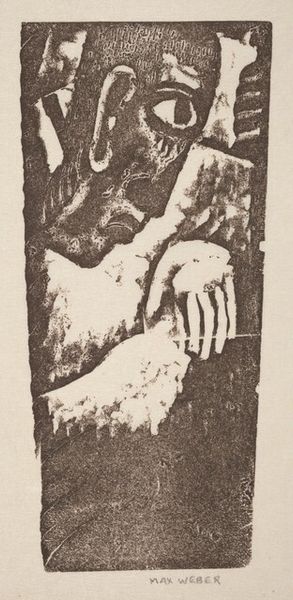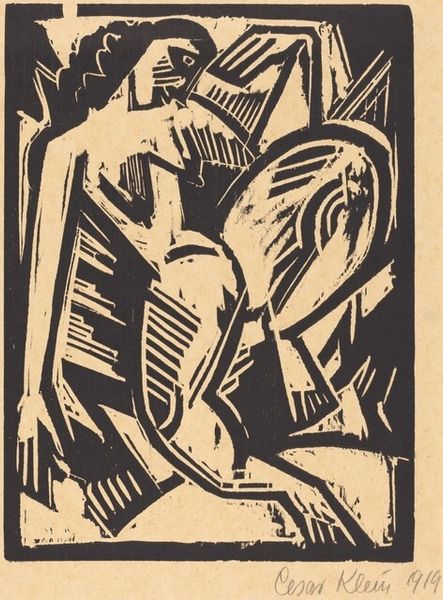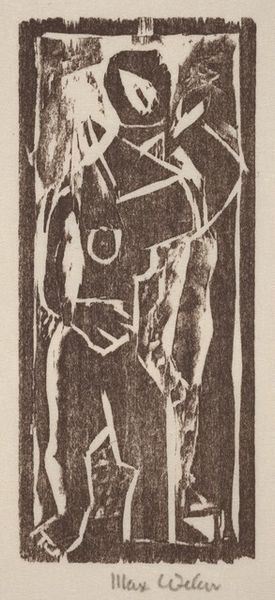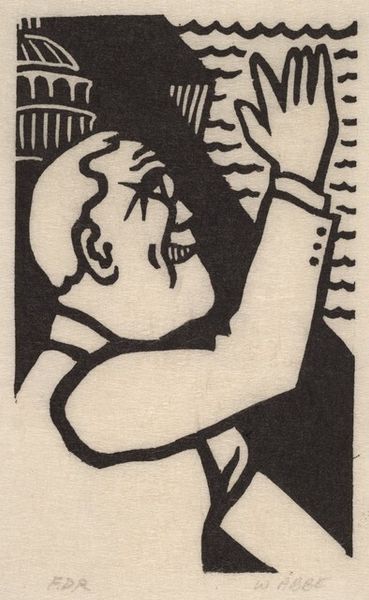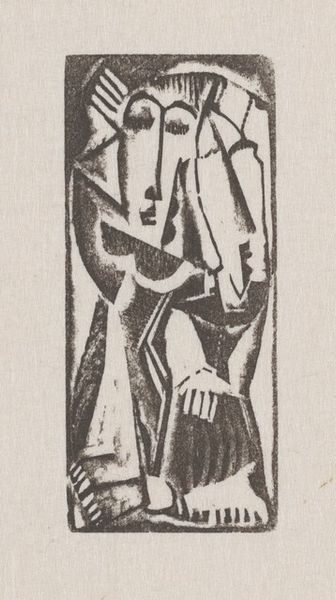
print, woodcut
#
portrait
# print
#
figuration
#
expressionism
#
woodcut
Dimensions: image: 8.3 x 3.2 cm (3 1/4 x 1 1/4 in.) sheet: 25.4 x 16.5 cm (10 x 6 1/2 in.)
Copyright: National Gallery of Art: CC0 1.0
Editor: Here we have Max Weber's woodcut, "Study," created around 1919 or 1920. I find it quite intense – the figure seems overwhelmed, almost shielding themselves. What strikes you most when you look at this print? Curator: The covered face is the key, I think. The hand, splayed, obscuring the face—it's a very loaded gesture. It speaks to shielding, yes, but from what? Is it shame, fear, or perhaps a willed blindness? And the book – what does it represent in juxtaposition to the covering? Editor: That's interesting – I hadn't considered the "blindness" aspect so directly. The book, it looks like maybe it should symbolize knowledge, or hope? Curator: Perhaps. But consider the era. Just after the Great War. Disillusionment was rampant. Could that book then represent shattered ideals, the very ideas that led to such destruction? Or is the figure overwhelmed by knowledge it wishes it didn't possess? Editor: So, the symbolism is flexible, depending on how you read the cultural mood. And the rough, expressionistic style of the woodcut – that adds to the sense of anxiety, doesn’t it? Curator: Absolutely. The medium itself—the stark contrast, the heavy lines—reinforces the psychological weight. Weber uses the visual language of Expressionism to externalize an inner state, a collective feeling of unease, perhaps. Editor: It's amazing how much history and emotion can be packed into such a small image. I initially just saw someone hiding, but it’s clearly more complex. Curator: Indeed. It shows us that symbols aren’t fixed; their meanings are shaped by context and by the viewer's own experiences. It’s a reminder of how visual imagery carries our shared, often painful, cultural memory.
Comments
No comments
Be the first to comment and join the conversation on the ultimate creative platform.

